I’ve always had a thing for places where history isn’t just told—it’s alive. So, when I finally found myself standing before Windsor Castle, I knew I wasn’t just visiting another tourist spot. I was stepping into a living, breathing piece of Britain’s royal story.
You can read about monarchs and medieval battles all you want, but nothing compares to standing where kings once plotted wars, queens held court, and secrets echoed through stone corridors. Windsor Castle isn’t just a relic—it’s still in use! Imagine that: a castle built nearly 1,000 years ago, and it’s still hosting royal events today.
Perched by the River Thames, Windsor Castle isn’t just the world’s oldest and largest occupied castle—it’s a place where kings, queens, and centuries of drama still linger in the air. From William the Conqueror to Queen Elizabeth II to King Charles III now, this fortress has seen it all: wars, weddings, ghosts (yes, really), political intrigue, and even a fire that nearly destroyed part of it in 1992. Let me take you through why Windsor Castle completely blew me away—and how you can make the most of your visit too.

Quick Facts
📍 Location: Windsor, Berkshire, England
🏗️ Built: Originally in the 1070s, expanded over centuries
🏰 Style: A glorious mix of Medieval, Gothic, Baroque, and Georgian influences
🎭 Known For: Being a royal residence, housing the Order of the Garter, epic state banquets, and centuries of royal history.
🌟 Highlights: St George’s Chapel, State Apartments, Changing of the Guard, Queen Mary’s Dolls’ House
👑 Famous Residents: Monarchs since William the Conqueror, Queen Elizabeth II, King Charles III
🏆 UNESCO Status: Surprisingly, not listed—but undeniably iconic.
🌐 Website: Windsor Castle Official Site

A Royal Legacy: The History of Windsor Castle
When you first walk up to Windsor Castle, it’s easy to assume it’s always looked this way—stately, solid, and maybe even a little bit intimidating. But the truth is, this place has been a work in progress for close to a thousand years. I didn’t know most of its backstory before I visited; I just knew it was “the Queen’s weekend home.” The scale of it all only started to sink in as I learned how many layers of history are stacked on top of each other here.
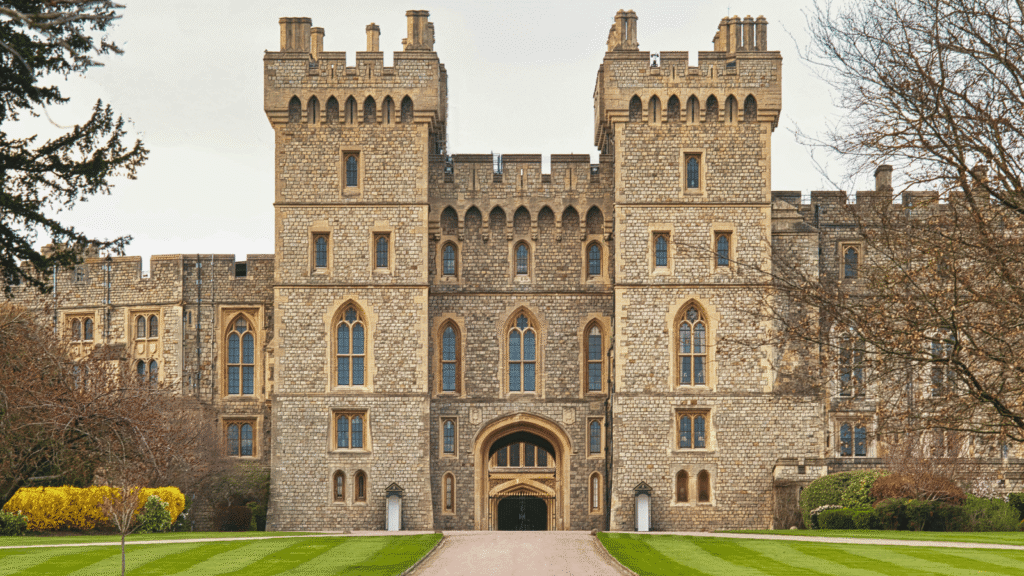
The story really gets going in the 1070s, when William the Conqueror picked this spot, high above the River Thames, and built a wooden fort. He wanted to protect London and keep his grip on the new English kingdom. It’s hard to picture those early years now, with tourists and Guards everywhere, but if you look closely at the foundations, you can almost sense that early, rugged energy.
Windsor’s next major transformation came thanks to Edward III—who was actually born here. He rebuilt the place in stone and gave it that classic Gothic look you see in the oldest sections. Later on, other monarchs left their mark. Charles II, trying to compete with the glitz of Versailles, jazzed up the interiors with tapestries and art from all over Europe. George IV, known for his taste (and excess), went all out with turrets, gold, and the kind of flourishes you’d expect in a fairy tale.
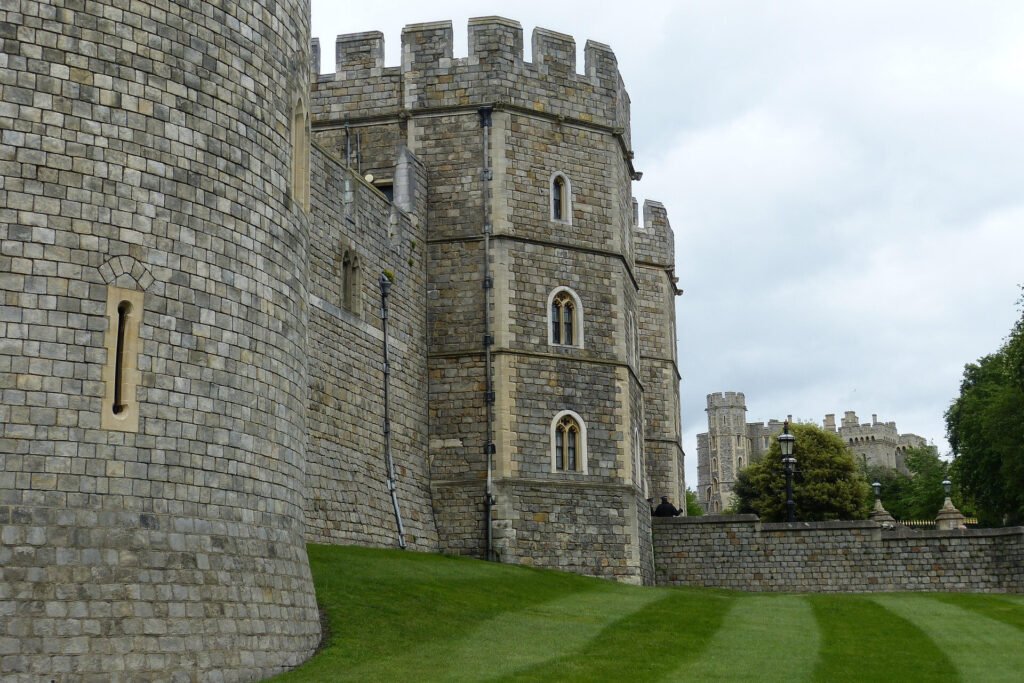
Of course, not everything was royal balls and banquets. The castle saw sieges, political plots, and even serious damage. The worst was in 1992, when a fire tore through more than a hundred rooms. Restoration took years—and honestly, I think it’s a testament to British determination that so much was painstakingly put back together, right down to the last gilded chair leg.
But what makes Windsor Castle stand out for me isn’t just the old stories. It’s the fact that it’s still a real home. Queen Elizabeth II spent most weekends here. In 2020, during the pandemic, this was where she hunkered down—sharing Christmas messages to the nation from a drawing room most of us only see in news clips. When you visit, you’re not just looking at relics; you’re brushing up against living history, where the past and present aren’t that far apart.

Legends & Myths of Windsor Castle
For a castle that’s stood for almost a thousand years, Windsor has its fair share of stories—though maybe not the kind you’d find in a Hollywood ghost tour. Locals sometimes whisper about secret tunnels rumored to run beneath the castle grounds, supposedly built as escape routes for royalty during times of crisis. Whether they exist or not, nobody’s managed to map them all, which only adds to the intrigue.
There are tales of ghostly apparitions too. Some say the ghost of Henry VIII has been spotted hobbling around St George’s Chapel, especially near his tomb. Others claim to have seen Elizabeth I, dressed all in black, drifting along the library. Staff and guards rarely confirm the stories outright, but after hours, when the castle empties out and the lights dim, it’s easy to imagine shadows moving where they shouldn’t.
More than ghosts, though, Windsor’s legends often revolve around royal secrets and old traditions. The annual Order of the Garter ceremony, for example, comes with its own customs and whispered stories. Even the massive Round Tower is wrapped in rumor—was it ever really used to hide royal treasure? No one knows for sure. It’s this mix of fact and folklore that helps keep Windsor’s history alive, long after the tourists have gone home.
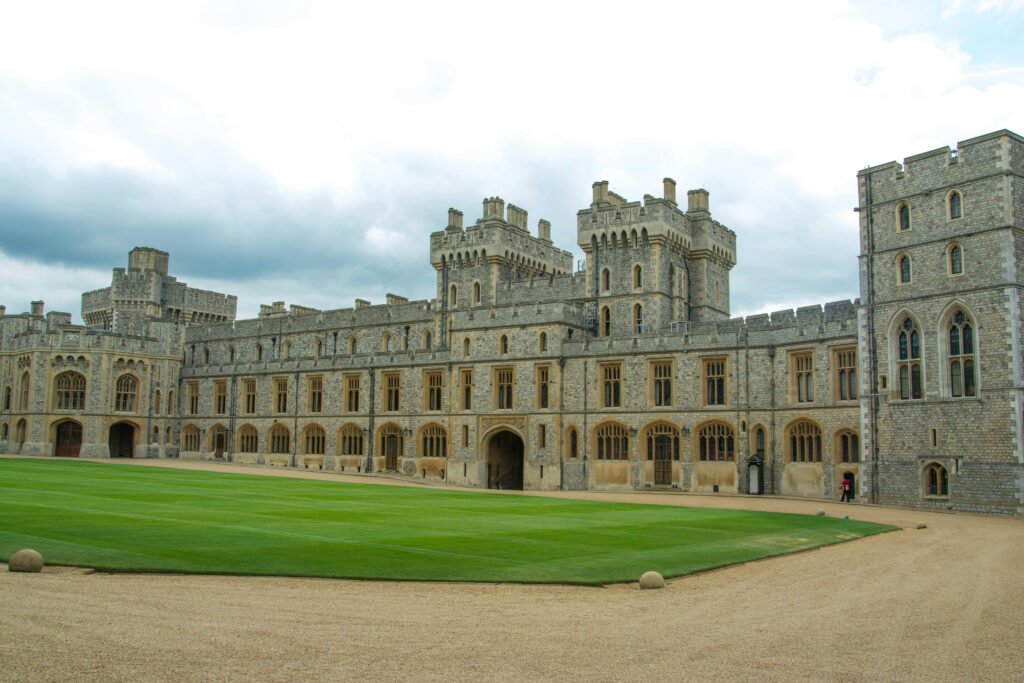

Windsor Castle’s Architecture: A Living Patchwork
One thing that surprised me most about Windsor Castle was how it refuses to fit into just one era or style. The result is a fascinating architectural patchwork that tells its own story, even if you’re not a history buff.
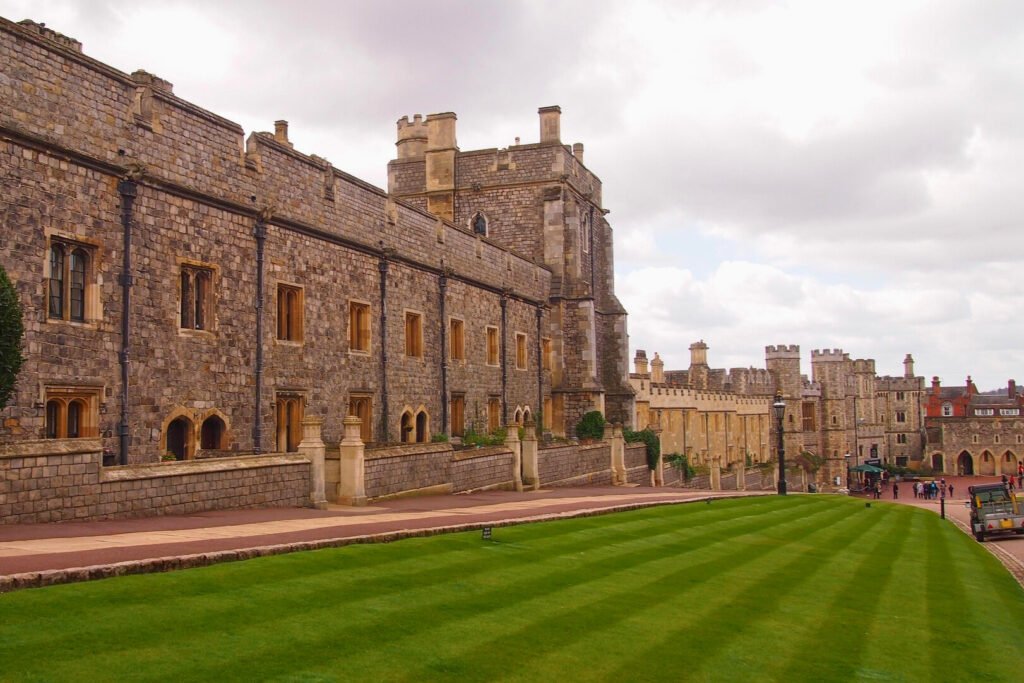
The original core, built by William the Conqueror, was a classic Norman motte-and-bailey—a practical fortress with thick walls and a keep on a mound. Over the centuries, just about every monarch added, demolished, or reworked something. Walk around, and you’ll spot medieval towers next to elegant Georgian apartments, with a good helping of Gothic and Victorian thrown in. The Lower Ward’s walls and arrow loops still feel medieval, while the Upper Ward is grand and ceremonial.
St George’s Chapel, a highlight for most visitors, is pure Perpendicular Gothic—a style unique to England. Its high, light-filled nave and intricate stone fan vaulting are as impressive as anything you’ll see at Westminster Abbey. The State Apartments reflect 18th- and 19th-century tastes, full of ornate plasterwork and rich colors. Even the restoration after the 1992 fire was careful to blend modern safety with original details, so much so that most people wouldn’t spot where the old ends and the new begins.
In short, Windsor Castle is living proof that a royal home can change with the times and still feel like one seamless place. Next time you visit, look for those little architectural clues. They’re everywhere—if you slow down long enough to notice.
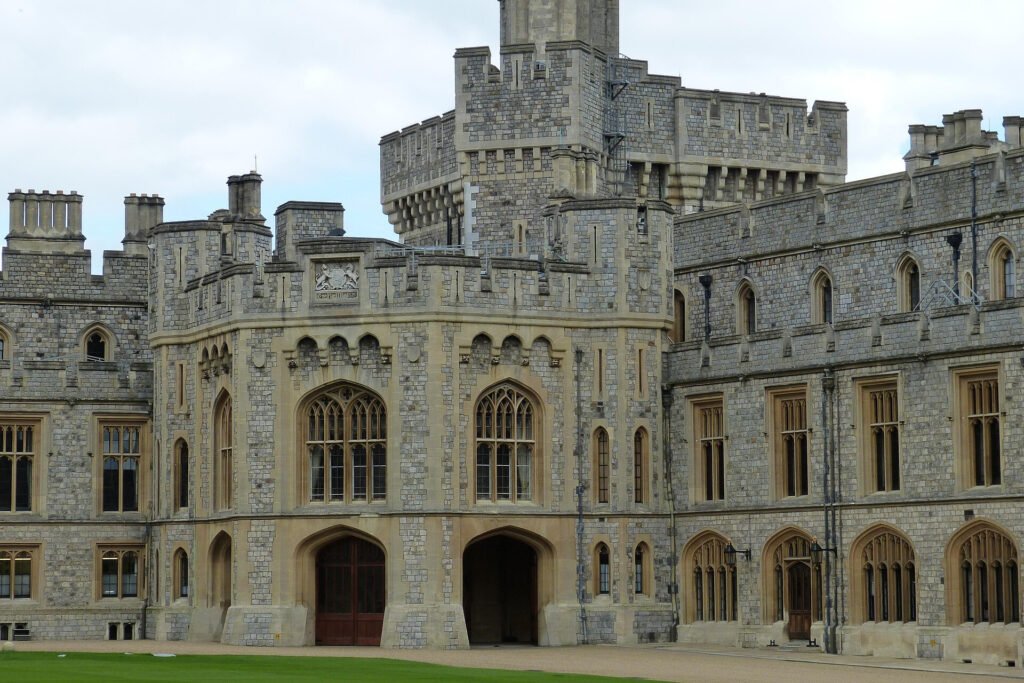

Best Things to See Inside Windsor Castle
St George’s Chapel
If you do nothing else, make time for St George’s Chapel. It’s not just a church—it’s the resting place of monarchs, including Henry VIII and Queen Elizabeth II. The architecture is jaw-dropping, with fan-vaulted ceilings and medieval stained glass that glows on a sunny day. Try to visit early or late for a quieter experience; I once had most of the nave to myself just after opening.
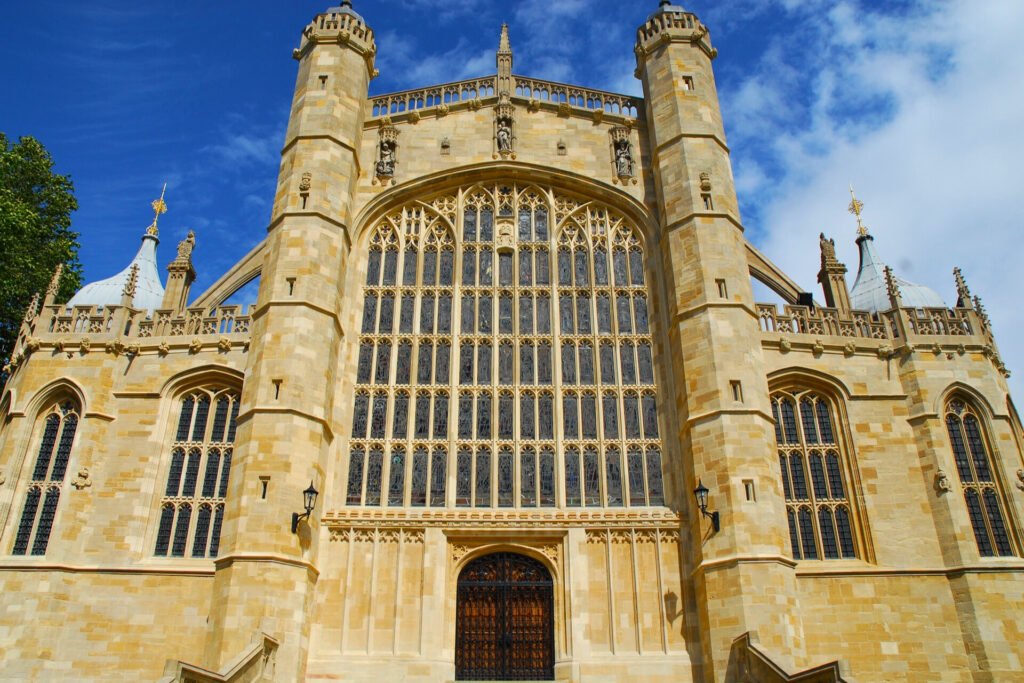
State Apartments
These rooms are the castle’s showpiece. Think painted ceilings, chandeliers, walls lined with royal portraits, and a collection of arms and armor. The route winds through chambers that are still used for official events, so don’t be surprised if part of the tour is closed off for a banquet or ceremony. Even so, you get a feel for the pageantry of royal life.
Changing of the Guard
This ceremony isn’t just for tourists—locals still stop to watch. It happens a few days a week (usually Tuesdays, Thursdays, and Saturdays, but always check the schedule). Best viewing spots are outside the main gate or near the parade ground. The marching band and precision moves are impressive, even if you’ve seen it before in London.
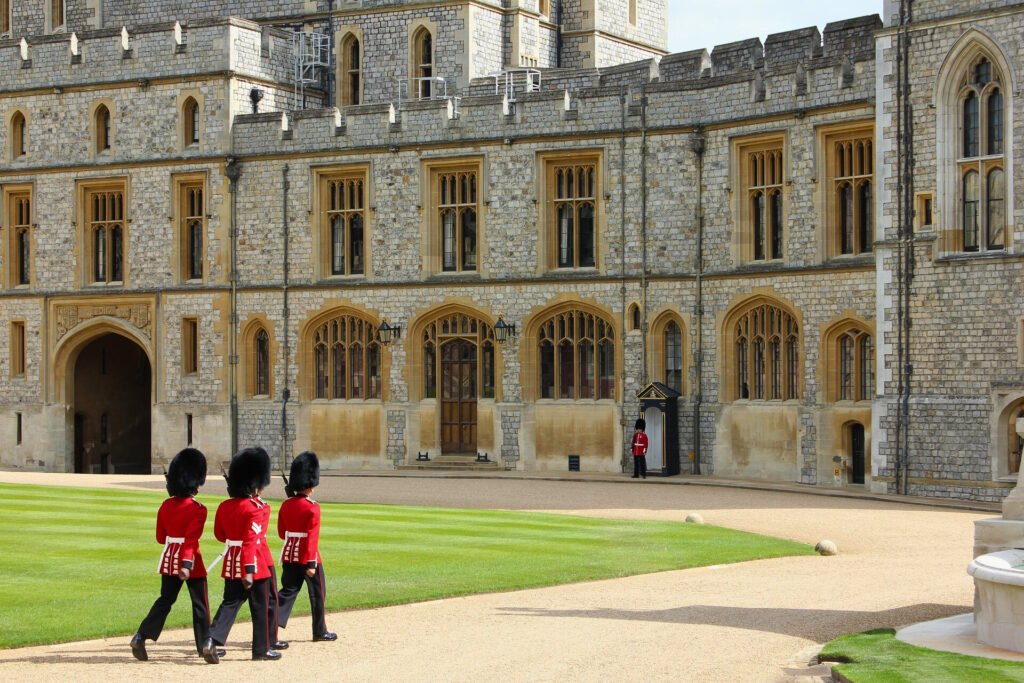
Semi-State Rooms
Open only from autumn to spring, these are the private apartments created for George IV. The décor is over-the-top—think gilded mirrors, velvet curtains, and intricate inlays. If you catch them open, don’t rush through; there’s detail in every corner.
Queen Mary’s Dolls’ House
It sounds like a children’s attraction, but honestly, this is one of the most fascinating things in the castle. Built in the 1920s, the dolls’ house is a scale model, complete with working lifts, running water, and tiny bottles of wine. Every time I visit, I spot something new—a miniature library, a fully stocked kitchen, and even little art on the walls.
Castle Grounds & the Long Walk
Before you leave, stroll outside. The castle lawns are perfect for photos, and the Long Walk—a tree-lined avenue stretching over two miles—offers a classic view back toward the castle. If you have time, walk a bit of it. I always find it’s the best spot to soak in the size and setting of Windsor Castle, away from the crowds.

Practical Visitor Information
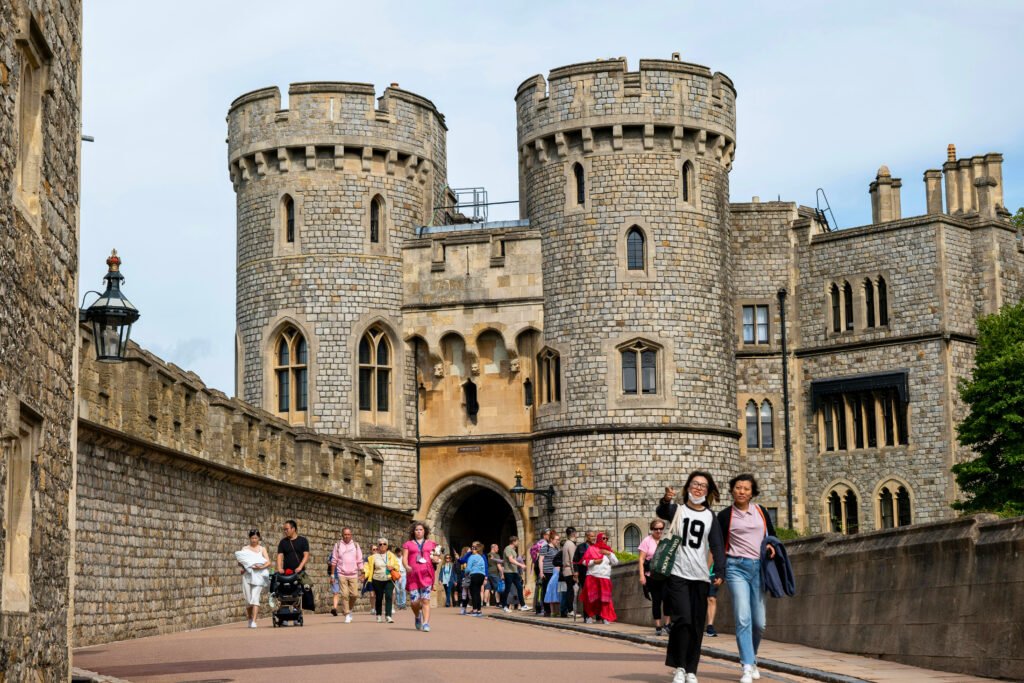
Opening Hours
Windsor Castle is open to visitors most days, but hours shift by season. From March to October, it’s usually open from 10:00 a.m. to 5:15 p.m. (last admission 4:00 p.m.). November through February, it closes a bit earlier, around 4:15 p.m. (last entry 3:00 p.m.). Always check the official website before you go—occasionally, the castle closes for royal events or ceremonies.
Ticket Prices & Booking
Expect to pay around £31–£35 for an adult ticket, with discounts for children, students, and families. If you’re planning well ahead, book online through the Royal Collection Trust site for guaranteed entry and to skip the main queue. Tickets include access to St George’s Chapel, the State Apartments, and all open grounds.
Windsor Castle vs. Other Royal Residences
Compared to Buckingham Palace, Windsor Castle feels less formal and more personal. It’s the oldest and largest occupied castle in the world, and the Queen spent more time here than in London. You see living history, not just velvet ropes and locked doors.
Security Procedures & Entry Tips
There’s airport-style security at the entrance, so pack light. Big backpacks and suitcases aren’t allowed. Arrive 15–20 minutes before your time slot, especially in summer. Photography is allowed in the grounds, but not inside the State Apartments or St George’s Chapel.
Best Time to Visit
Weekdays are less crowded than weekends, and mornings tend to be quieter. Avoid school holidays if you can. Spring and autumn are great for both weather and lighter crowds. If you want to see the Changing of the Guard, time your visit accordingly. Always check for royal events—sometimes parts of the castle are closed at short notice.
Extra Tip
Allow at least two to three hours for your visit. If you want to really soak it all in, plan on half a day.

How to Get There
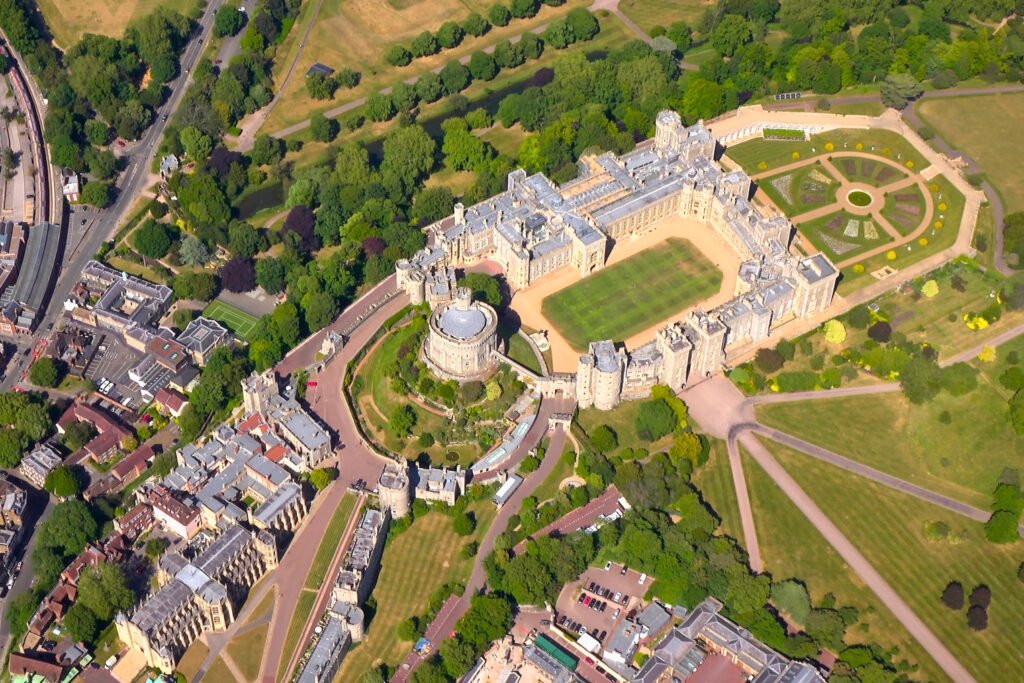
By Train from London
This is the easiest option. Two main train routes run from London: Paddington (change at Slough for Windsor & Eton Central) or Waterloo (direct to Windsor & Eton Riverside). Both stations drop you just a short walk from the castle gates. Paddington is usually a bit faster, around 30–40 minutes total, but Waterloo is direct—so choose based on where you’re staying.
Driving & Parking
If you’re coming by car, Windsor is well-signposted from the M4. Parking in central Windsor fills up fast, especially on weekends. The main car parks are Alexandra Gardens and King Edward VII, both about a 10-minute walk from the castle. Park & Ride lots outside town are handy if you want to avoid traffic.
Accessibility
The main castle areas and grounds have step-free access, and there are lifts in key places. Some older parts have uneven floors or stairs, but staff are helpful. Accessible toilets and loaner wheelchairs are available—just ask at the entrance. Both train stations are wheelchair-friendly, with step-free routes to the castle. If you have mobility needs, let staff know when you book—they’ll make it easier.

Local Tips & Lesser-Known Experiences
Best Spots for Changing of the Guard
Arrive 15–20 minutes early and head toward the main Henry VIII Gate for the best view. Locals sometimes gather near the lower ward or along the parade route, which can be less crowded than the front gates.
Quiet Corners and Hidden Gems
If you need a breather, the cloisters around St George’s Chapel are peaceful, especially on weekday afternoons. The Moat Room, tucked away near the Round Tower, often has interesting exhibits and is easy to miss. For a unique view, check the steps leading toward the North Terrace—on a clear day, you’ll spot planes coming in over London.
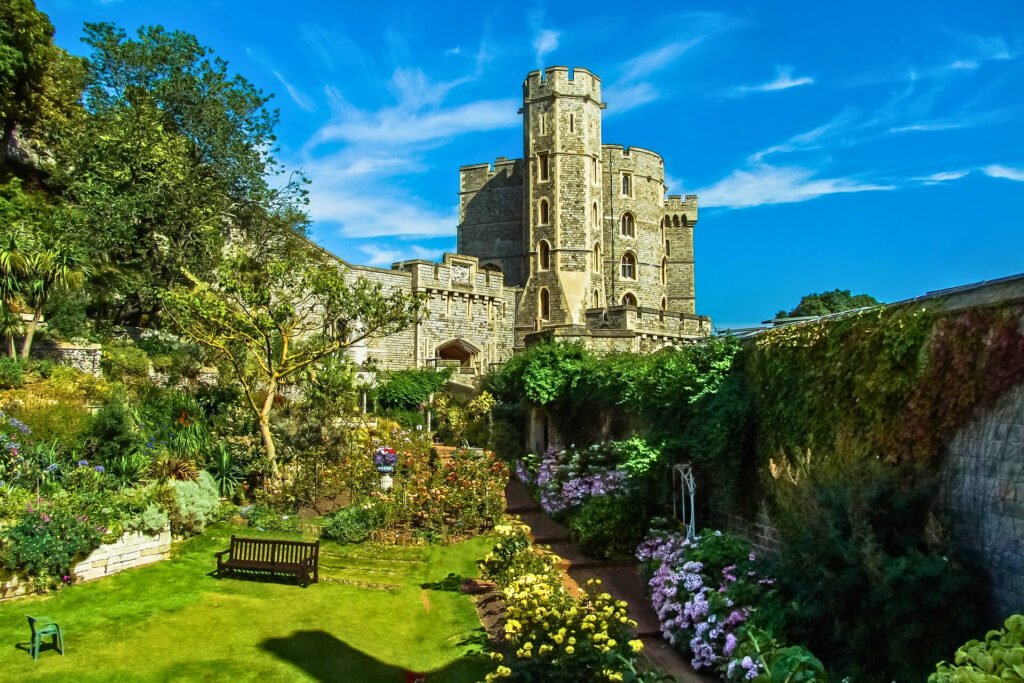
Cafés and Food
Skip the first coffee stand you see and wander down Peascod Street instead. Cinnamon Café is a favorite for a quick snack or lunch, while The Carpenter’s Arms pub has solid local ales. If you want something classic, The Ivy Royal Windsor serves British dishes with a view of the castle walls.
Exploring Windsor Town
Eton College is just across the pedestrian bridge—well worth a stroll, especially when students are out rowing or playing cricket. Windsor Great Park is massive and rarely crowded; bring walking shoes if you want to see the lakes or ancient oaks. For a short, relaxing break, walk along the Thames towpath—swans, narrowboats, and plenty of benches for people-watching.

Suggested Itinerary Ideas
Half-Day Visit
Arrive early and start with the State Apartments before the biggest crowds. Head to St George’s Chapel next—try to catch a quiet moment for reflection. Time your visit to see the Changing of the Guard if it’s scheduled. End with a stroll along the castle grounds or a quick coffee nearby.
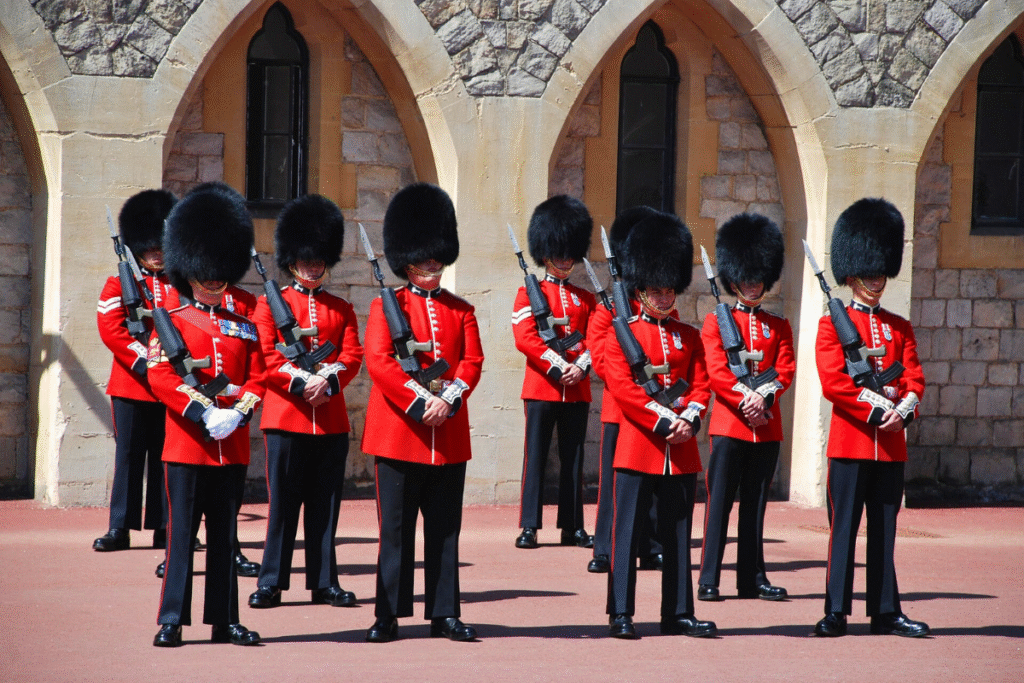
Full-Day Royal Experience
Begin with a guided tour if available; these add a ton of context you’d miss solo. Take your time in the State Apartments and Semi-State Rooms (if open), and don’t skip Queen Mary’s Dolls’ House. Have lunch at a local café or a picnic in Windsor Great Park. Walk across the bridge to Eton College or wander the town’s boutiques and bookshops. Wrap up your day with an afternoon walk along the Long Walk for those iconic castle views.
Weekend Trip from London
Combine Windsor Castle with nearby sights. On day one, explore the castle and Windsor town. Day two, visit Windsor Great Park or take a boat ride on the Thames. If you have kids, Legoland Windsor is a fun option. For history lovers, consider adding Runnymede (site of the Magna Carta) or Hampton Court Palace, both a short drive or train ride away.

Nearby Attractions & Day Trips
Eton College
Just a short stroll over the Thames, Eton College is one of England’s most famous schools. The campus is open to visitors at certain times, and the historic buildings are worth seeing even from the outside.
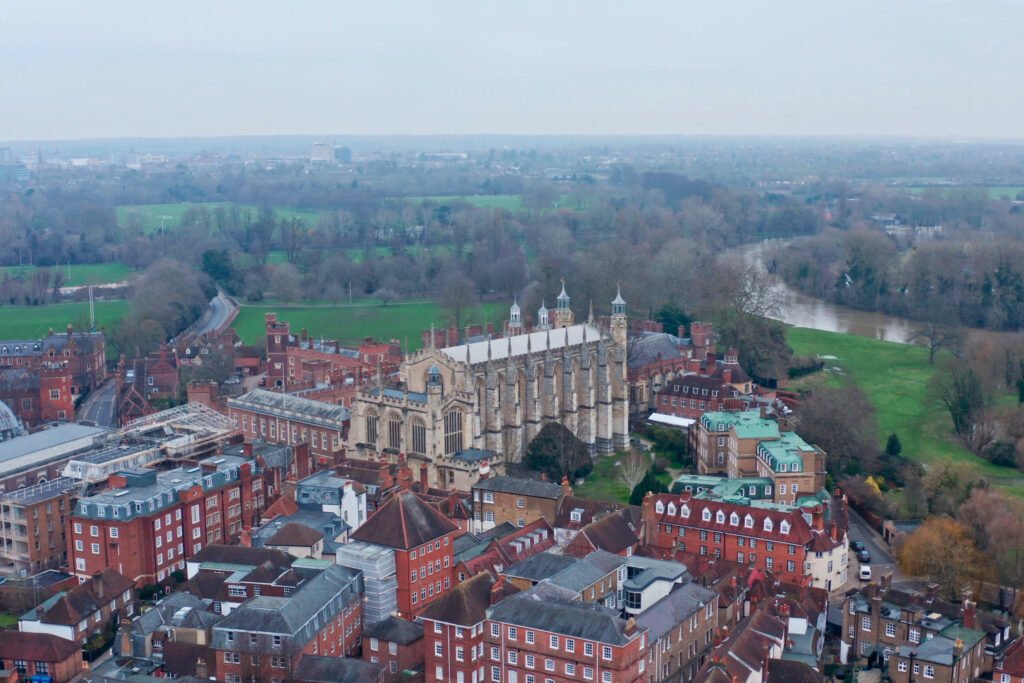
Windsor Great Park
This vast green space offers miles of walking and cycling trails, gardens, and lakes. The Long Walk leads straight from the castle gates into the heart of the park—ideal for picnics or simply stretching your legs.
River Thames Walks & Boat Trips
Windsor’s stretch of the Thames is especially scenic. You can join a short river cruise, rent a rowing boat, or just walk along the towpath for great views and plenty of photo spots.
Savill Garden
Part of Windsor Great Park, this landscaped garden is famous for its seasonal displays of flowers and rare plants. A lovely option if you’re visiting in spring or summer.
Legoland Windsor Resort
A top pick for families, Legoland is about 10 minutes from the castle by taxi or shuttle bus. It’s easy to pair with a morning or afternoon at the castle.
Runnymede
About 15 minutes away by car, this riverside meadow is where the Magna Carta was sealed in 1215. There are walking trails and a couple of impressive memorials—especially interesting for history buffs.
Hampton Court Palace
Around 30–40 minutes by train or car, this Tudor palace is packed with stories, stunning gardens, and its own maze. If you have a full day, it’s a brilliant companion to Windsor.
London
With fast train links, central London is under an hour away—perfect if you want to combine Windsor Castle with some of the capital’s museums, parks, or theatre.

Windsor Castle FAQ
How long do you need to visit Windsor Castle?
Most people spend 2–3 hours, but half a day lets you see the State Apartments, St George’s Chapel, the Doll’s House, and still have time for a stroll in the grounds.
Can you take photos inside Windsor Castle?
Photography is allowed in the grounds but not inside the State Apartments or St George’s Chapel. Always check for signs—rules can change during special exhibitions.
Is Windsor Castle open every day?
It’s usually open Thursday to Monday. Sometimes it closes for royal events or official business, so check the official website before you go.
Do I need to book tickets in advance?
Advance booking is highly recommended, especially in summer and on weekends. You’ll save time and guarantee entry for your preferred date.
Is Windsor Castle accessible for wheelchairs or strollers?
Much of the castle is accessible, with step-free routes and lifts to the main areas. Some historic rooms have uneven floors. Accessible toilets and wheelchairs are available—ask at the entrance.
What’s the best way to get to Windsor Castle from London?
The train is easiest—either from Paddington (with a change at Slough) or from Waterloo (direct). Both stations are a short walk from the castle.
Is there a dress code for St George’s Chapel?
There’s no strict dress code, but respectful clothing is recommended—avoid hats inside, and dress modestly, especially during services.
Can you see the Changing of the Guard at Windsor Castle?
Yes, but it’s not daily. Usually, it takes place on Tuesdays, Thursdays, and Saturdays around 11 am. Always check the schedule before your visit.
Are there food and drink options nearby?
Yes—there’s a café inside the castle grounds and plenty of options just outside the gates, from bakeries to traditional pubs.
Can you visit Windsor Castle as a day trip from London?
Absolutely. Trains from London take 30–50 minutes, and a day is more than enough for the highlights.

Final Thoughts
Windsor Castle surprised me. I didn’t go in expecting to be swept up, but looking back, I keep thinking about the odd details—the sound of gravel under my shoes, the sudden quiet of the chapel, how close you can actually get to the heart of the place. I even caught myself people-watching, half-listening to families pointing out little things I’d missed.
Was it the grand history or just the vibe of a living place? Maybe both. I can’t say I walked out knowing every king or every date, but that didn’t seem to matter. What stuck with me were the normal moments: a volunteer sharing a quick story, a kid racing his dad up the hill, the simple mix of locals and visitors coming and going.
If you end up at Windsor Castle, don’t stress about seeing everything. Let yourself wander, find a good spot for a view, and see what you notice. I left without all the answers, but with a lot more curiosity than I’d arrived with. Honestly, that’s the best part.
Already been? I’d love to hear your stories. And if you’re planning your first visit—trust me, you’re in for a treat.
👉 For more adventures through time, check out Edinburgh Castle’s rugged charm or the fairytale elegance of Château de Chambord.
📸 And if this article sparked your curiosity about the castles, follow along. We are on Instagram, Pinterest, Facebook, and X, too. More castles (and more stories) are just around the bend. Explore all our castle adventures here!

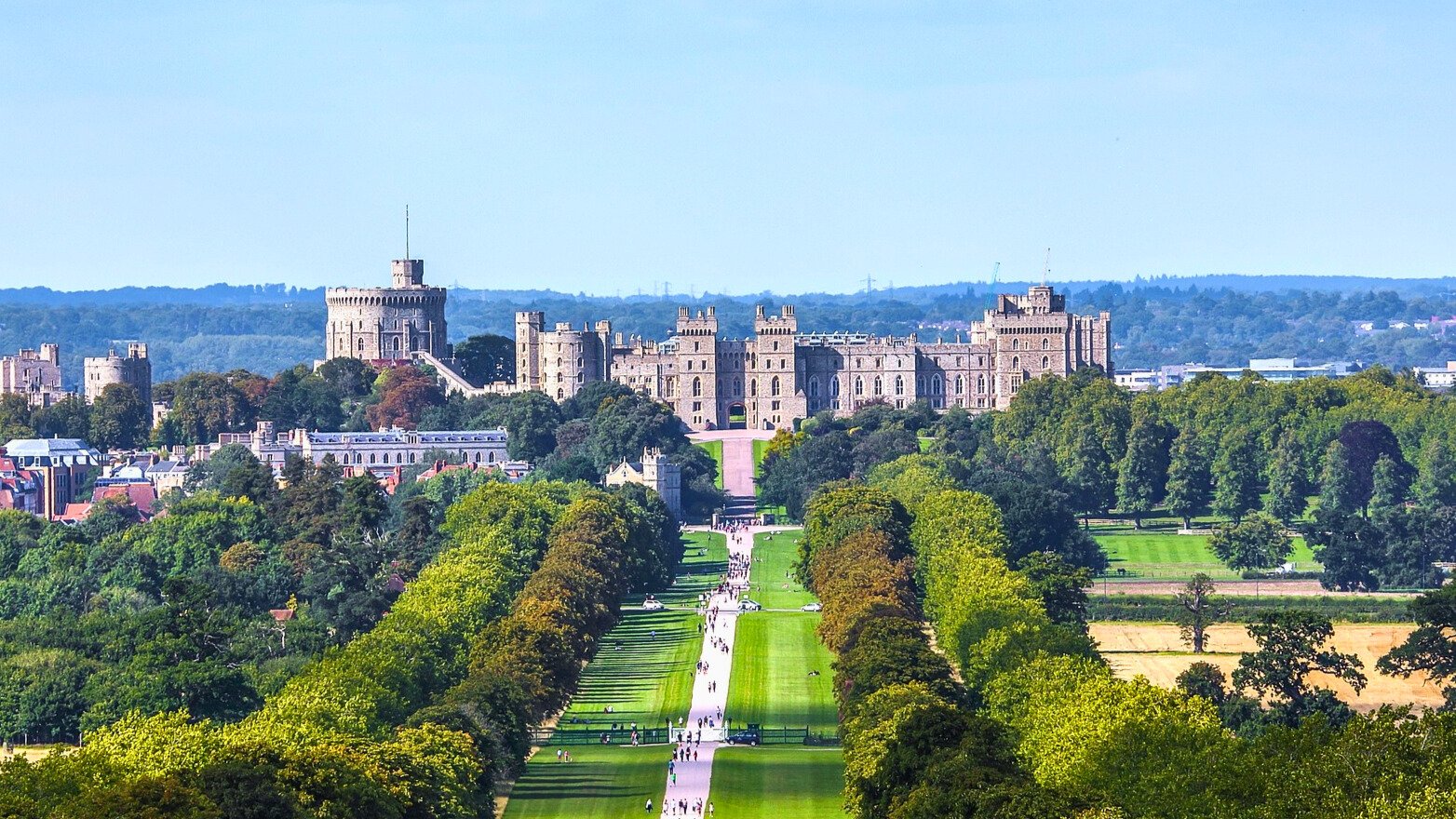



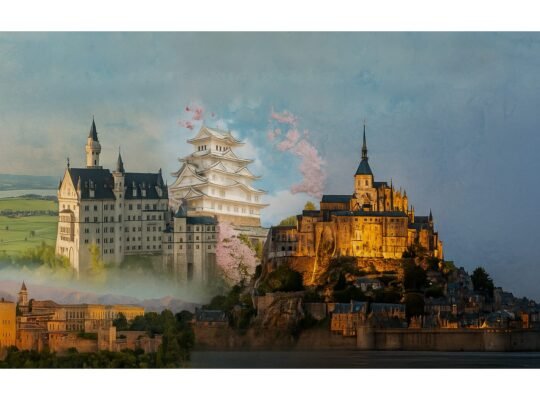
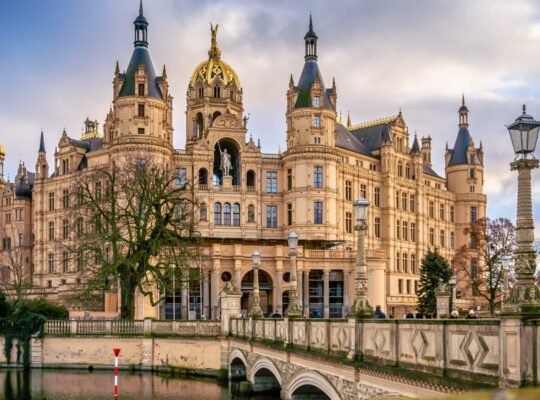

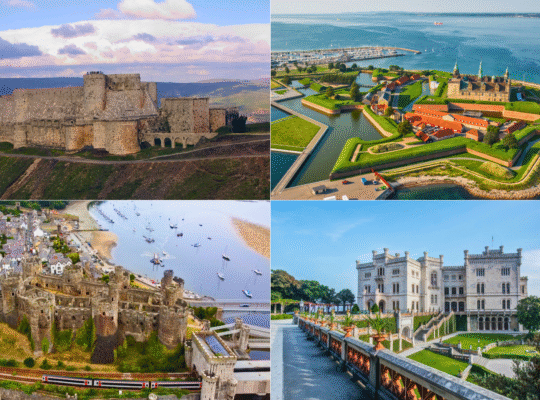


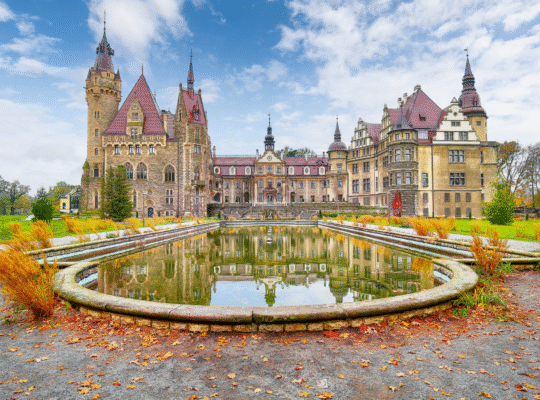
3 Comments